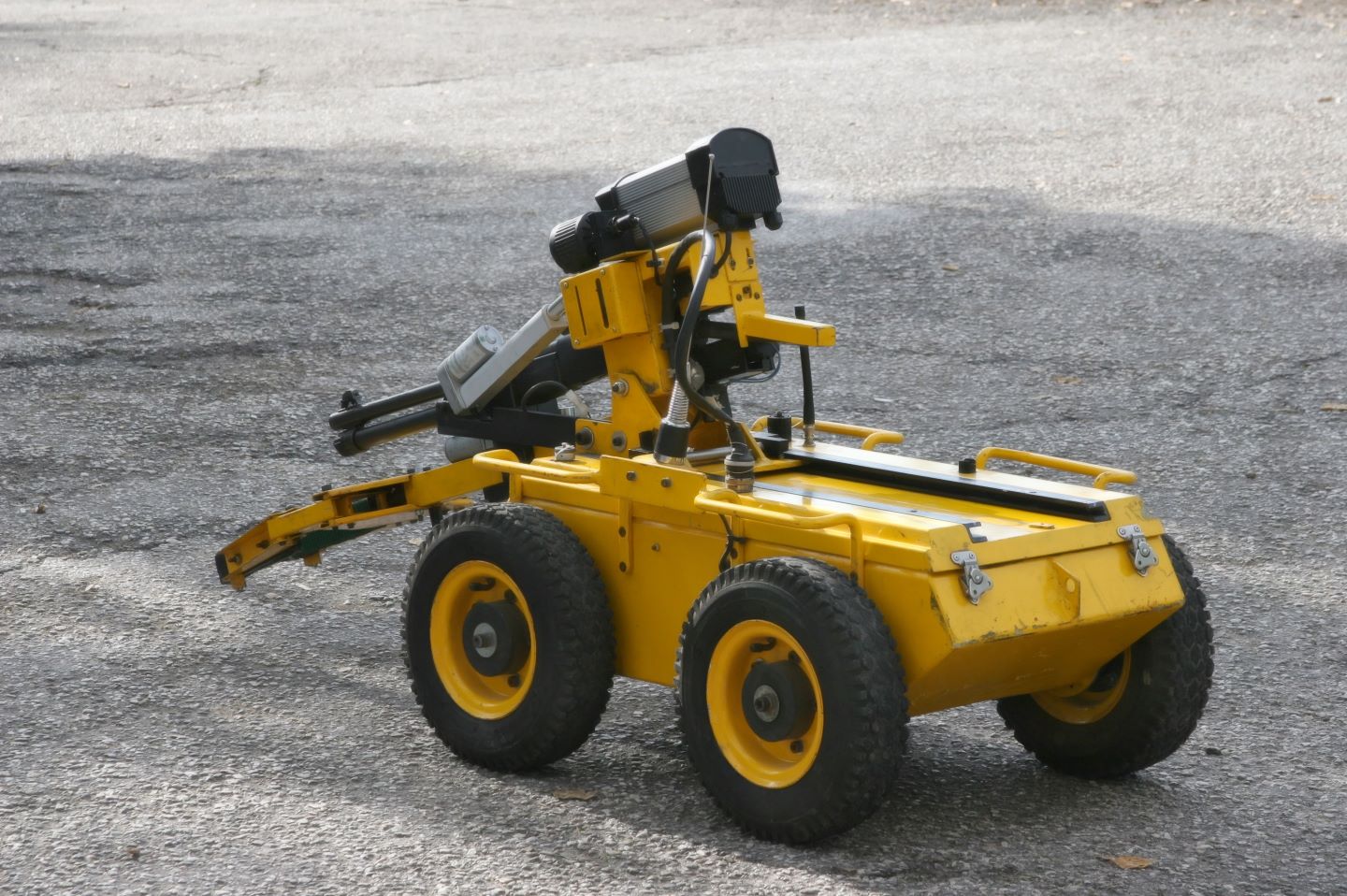For mining companies, there is a range of benefits to implementing technologies such as AI, IoT, robotics, and cloud. These include heightened productivity, increased safety, and reduced costs.
Robotics in mining
The use of robotics in mining—which includes drones, autonomous haulage systems (AHS), and remote-controlled machines—has revolutionised the sector. Mining companies deploy robotics across various mining operations, from surface mining to underground excavation and mineral processing. Due to their versatility, robots can benefit multiple segments of the mining value chain. For example, drones assist in surveying mining sites and collecting data such as topography and mineral layer distribution, while remote-controlled machines undertake drilling and blasting. In addition, field robots in mining (such as AHS) transport minerals from the site to processing plants and are particularly valuable in improving productivity in extraction and processing.
Where do robotics have the greatest impact on mining?
Automating repetitive tasks minimises human error, and robots are precise and reliable, thus boosting the efficiency of operations. For this reason, robotics is one of the areas of technology investment the industry is prioritizing.
In a poll run on Mining-Technology.com in June 2024, which received 288 responses, 58% of respondents stated that the greatest impact of robotics in mining was in improving productivity. Maintaining high productivity levels is one of the top priorities for mining companies. To ensure this, they must adopt the latest technologies, which allow them to automate and continuously monitor operations at a lower cost per unit output. Robotics play a crucial role in many operations, including hauling, drilling, blasting, and exploration. Commonly deployed robots include autonomous trucks, drilling robots, and robotic conveyor systems.
Safety impacts follow closely with 57% of respondents choosing this option in the poll. Safety is improved when hazardous tasks are performed without a human presence. Robots remove human workers from physical, biological, and ergonomic hazards. They also excel in tasks such as drilling in narrow or dangerous areas, such as unstable rock formations, while autonomous haulage systems significantly decrease the risk of accidents.
New mineral deposit discoveries are declining, as are ore grades. Therefore, identifying viable new mines and determining the economic feasibility of extracting a known resource is becoming increasingly difficult and requires dedicated technology. The 26% of respondents stated that robotics can have the greatest impact on resource development. Robotics will ease the shift to more underground mining and remote deposits while alleviating the need for workers to enter dangerous areas. Lastly, 16% of respondents stated that robotics’ greatest impact is in reducing emissions. The global focus on sustainability is growing, and intense regulatory pressure on emissions means that companies across all sectors need a net zero strategy. Many mining leaders have a long-term net-zero goal, setting 2050 as the target year for achieving net-zero carbon emissions.
Optimising consumption through automated equipment is at the heart of sustainable practices. For example, the deployment of robots underground instead of human workers reduces the energy requirements associated with ventilation and lighting. Robots are also used for environmental monitoring, and inspection robots can use cameras and sensors to recognise different minerals in more remote locations. Interestingly, advancements in robotic exploration hold promise for reducing mining’s environmental footprint as exploration robots facilitate the identification of mineral deposits without extensive drilling and excavation.




